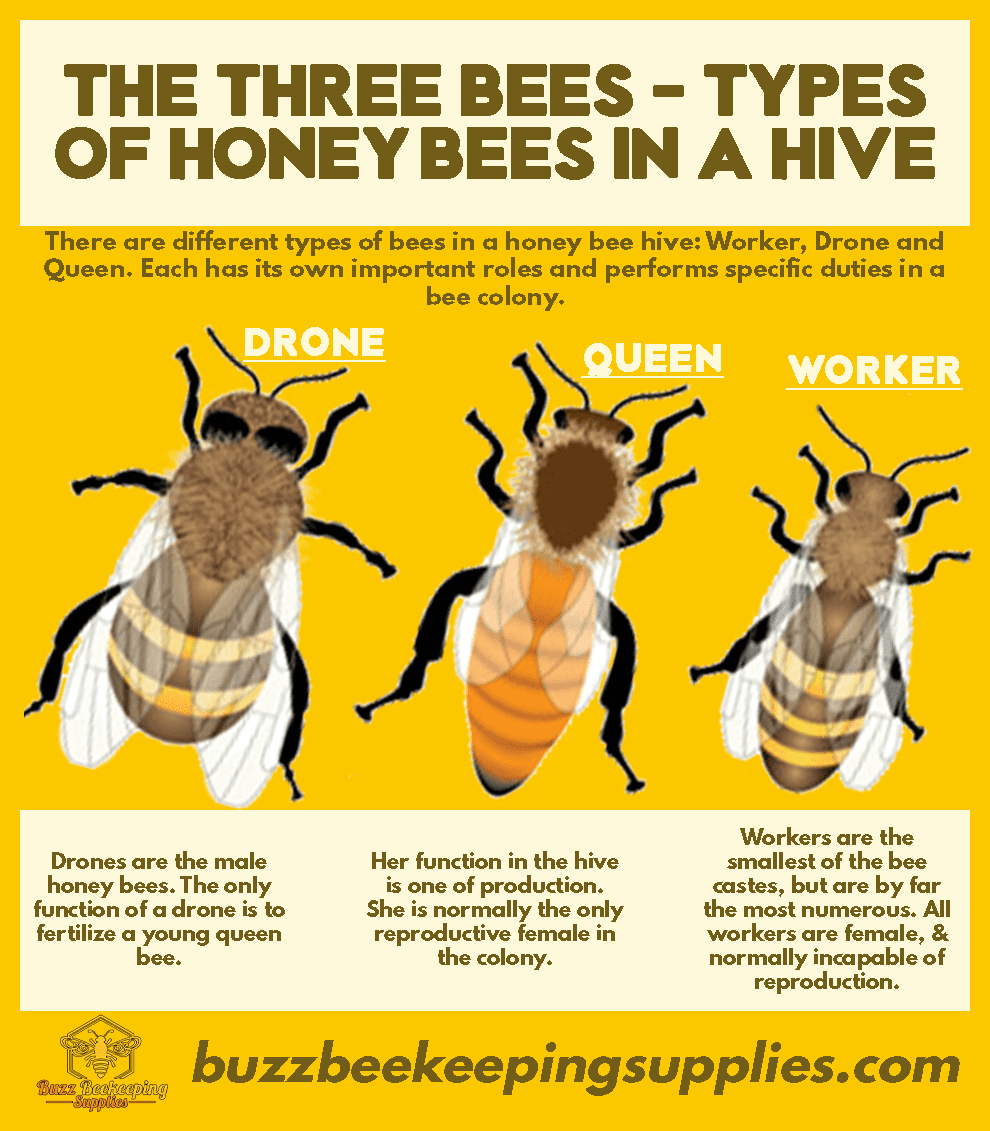Are you fascinated by the world of beekeeping? Do you want to discover more about the various honey bee breeds that make up this fascinating industry? Unlock the secrets of beekeeping and explore the many honey bee breeds that provide us with delicious honey, beeswax, and other products. Learn about their unique characteristics, behavior, and needs, and discover the best ways to care for them and the products they produce.
Types of Honey Bees
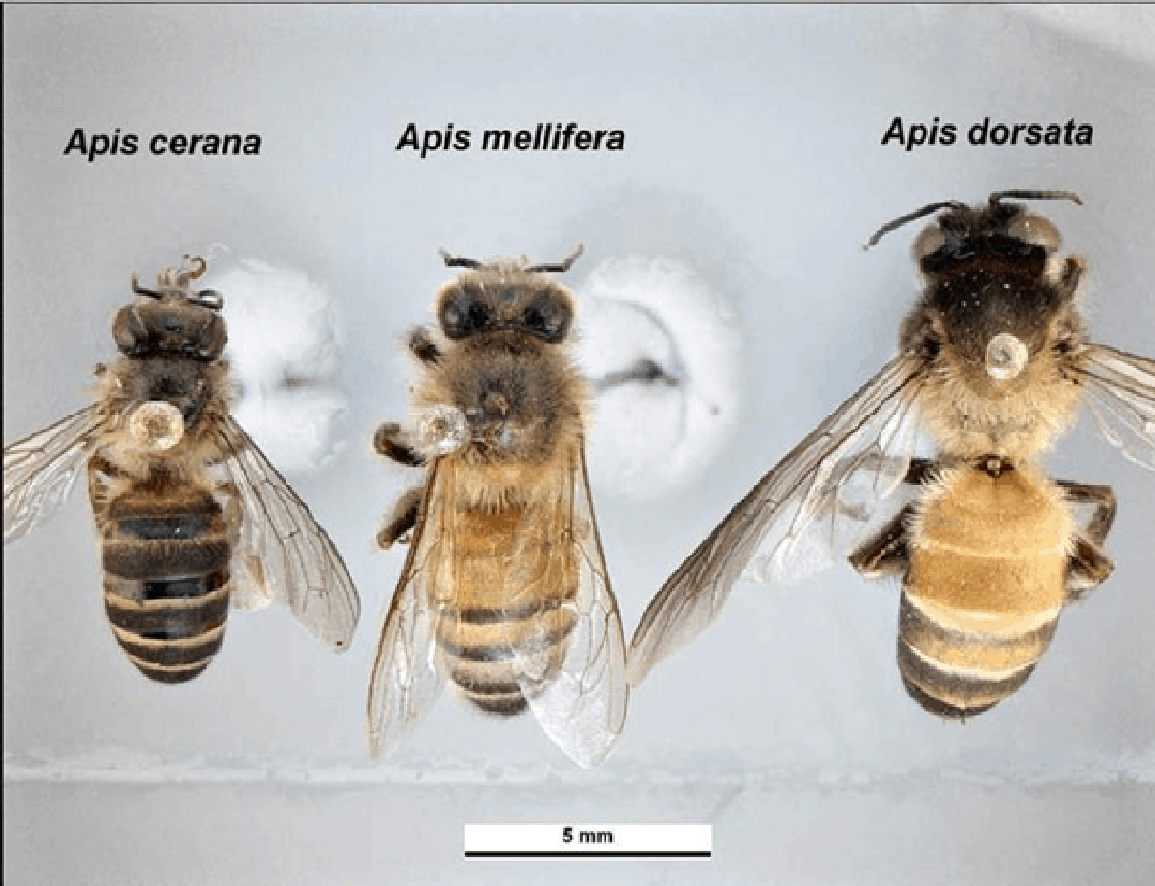
European Honey Bees
European honey bees are the most common species of bee found in the United States. They are well adapted to a wide range of climates and have been used in beekeeping for centuries. They tend to have a higher honey production than other types of honey bees and are relatively easy to manage.
Africanized Honey Bees
Africanized honey bees are a hybrid species of bee developed from the African bee and the European honey bee. They are much more aggressive than their European counterparts, making them difficult to manage. They are suited to warmer climates, so beekeepers in the southern United States often keep them.
Carniolan Honey Bees
Carniolan honey bees are native to central and eastern Europe. They are known for their gentle nature and high honey production. They are well-suited to cooler climates and can be found in some areas of the United States.
Italian Honey Bees
Italian honey bees are another European species of bee. They are well adapted to warmer climates and have a high honey production rate. They are also known for their gentle nature, making them a popular choice for beekeepers in the United States.
Buckfast Honey Bees
Buckfast honey bees are a hybrid species created by crossing different European honey bee breeds. They are known for their disease-resistant qualities and their extremely gentle nature. They are well-suited to a variety of climates and can be found in some parts of the United States.
The types of honey bees in the US vary greatly, so beekeepers should research the different breeds to determine which one is best suited to their needs. Each species has its own benefits and drawbacks, so it is important to understand the strengths and weaknesses of each before making a decision.
Different Varieties of Honey Bees
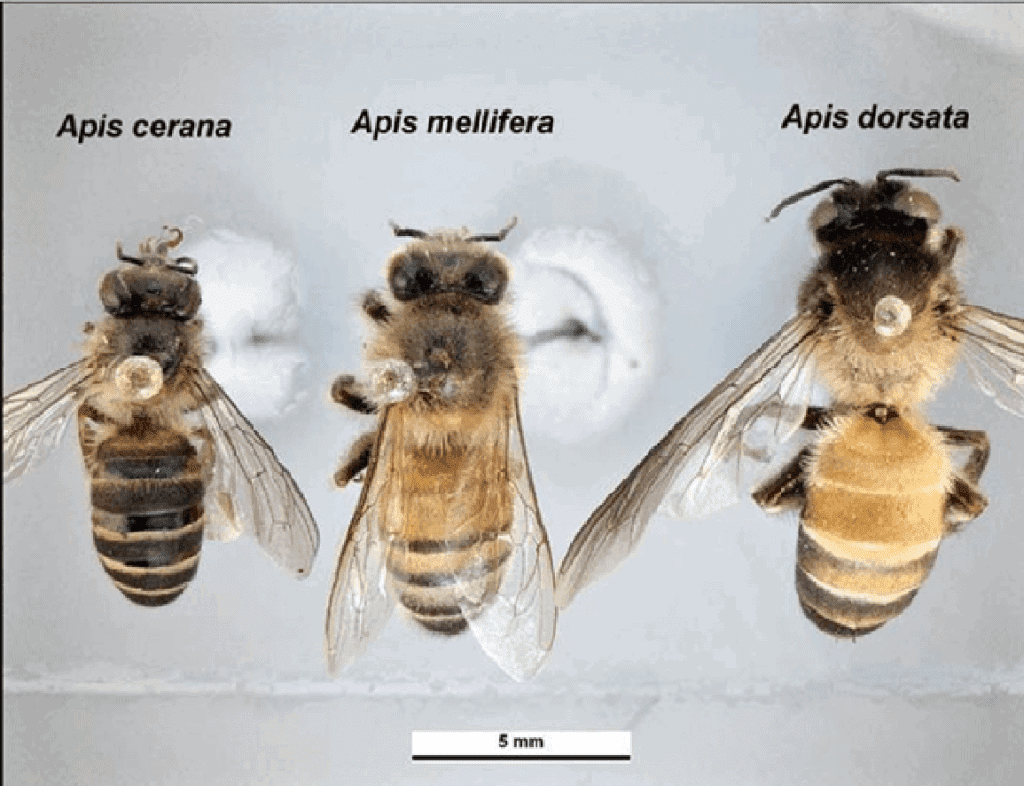
Italian Honey Bees
Italian Honey Bees (Apis mellifera ligustica) are one of the most common and popular honey bee species kept in the United States. They are known for their gentleness and good temperament, making them a great choice for beginner beekeepers. They produce a high amount of honey and are very resistant to diseases and parasites.
German Honey Bees
German Honey Bees (Apis mellifera mellifera) are known for their defensive behavior and aggressive nature, making them more difficult for beginners to handle. They are less likely to swarm and produce a good amount of honey, but not as much as Italian honey bees.
Russian Honey Bees
Russian Honey Bees (Apis mellifera macedonica) are one of the most disease-resistant bee species, making them a great choice for beekeepers in areas with harsh climates and challenging conditions. They are also less likely to swarm and produce a good amount of honey.
Carniolan Honey Bees
Carniolan Honey Bees (Apis mellifera carnica) are known for their gentle temperament and excellent temperature regulation, making them well-suited for colder climates. They are also highly disease-resistant and produce a good amount of honey.
Caucasian Honey Bees
Caucasian Honey Bees (Apis mellifera caucasica) are known for their mild temperament and good honey-producing ability. They are very resistant to diseases and parasites and are known to be one of the most gentle bee species.
Buckfast Honey Bees
Buckfast Honey Bees (Apis mellifera intermissa) are a hybrid species created by Brother Adam of Buckfast Abbey in England. They are known for their gentleness and good honey production, and are very resistant to diseases and parasites.
Cordovan Honey Bees
Cordovan Honey Bees (Apis mellifera iberiensis) are a Spanish bee species that is known for its excellent honey production and good temperament. They are very resistant to diseases and parasites and are known to be one of the most gentle bee species.
With all these different honey bee species to choose from, it can be a daunting task to choose the right one for your apiary. It is important to research each species and decide which one best suits your needs.
Starline Honey Bees
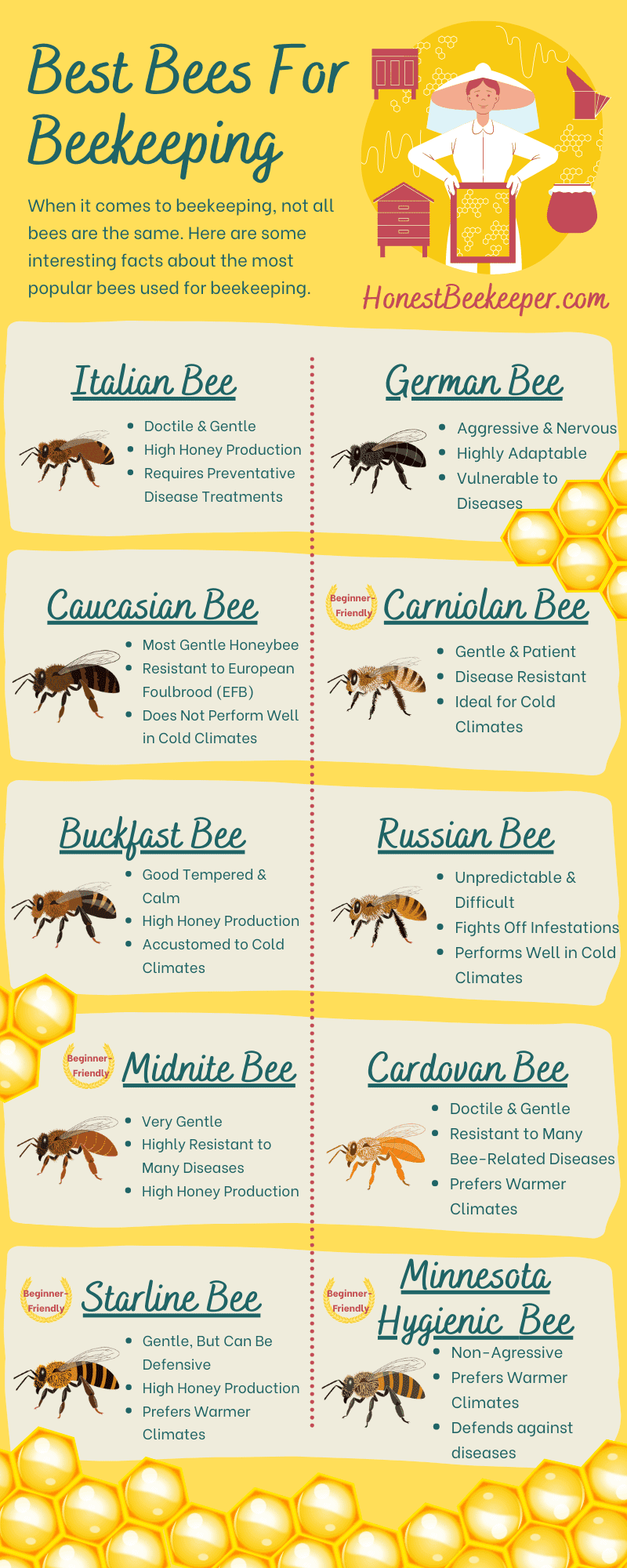
Starline honey bees are a hybrid bee developed in the 1960s by Dr. Frank E. Laidlaw of the University of Minnesota. They are known for their exceptional winter hardiness and strong honey production. Starline honey bees are a cross between Italian and Carniolan honey bees, making them well-suited for cold climates. They can be identified by the white band across their abdomens.
Starline Honey Bees are gentle in nature and have excellent foraging skills, making them an excellent choice for backyard beekeepers. Starline bees are especially well-suited for northern climates, as they are able to survive harsh winters with little winter maintenance. In addition, they are excellent honey producers, producing up to 60 pounds of honey per year. Furthermore, they are resistant to many of the most common honey bee diseases, making them a great choice for those looking to keep a healthy colony.
| Characteristic | Starline Honey Bee |
|---|---|
| Habitat | Cold climates |
| Appearance | White band across abdomen |
| Behaviour | Gentle and excellent foragers |
| Honey Production | Up to 60lbs/year |
| Disease Resistance | High resistance |
Starline honey bees are a great choice for those looking to keep their own colony of varieties of honey bees. They are hardy and disease-resistant, making them well-suited for cold climates, and they also produce a large amount of honey. Furthermore, they are gentle in nature and easy to handle, making them an ideal choice for backyard beekeepers.
Factors to Consider When Choosing a Honey Bee Breed
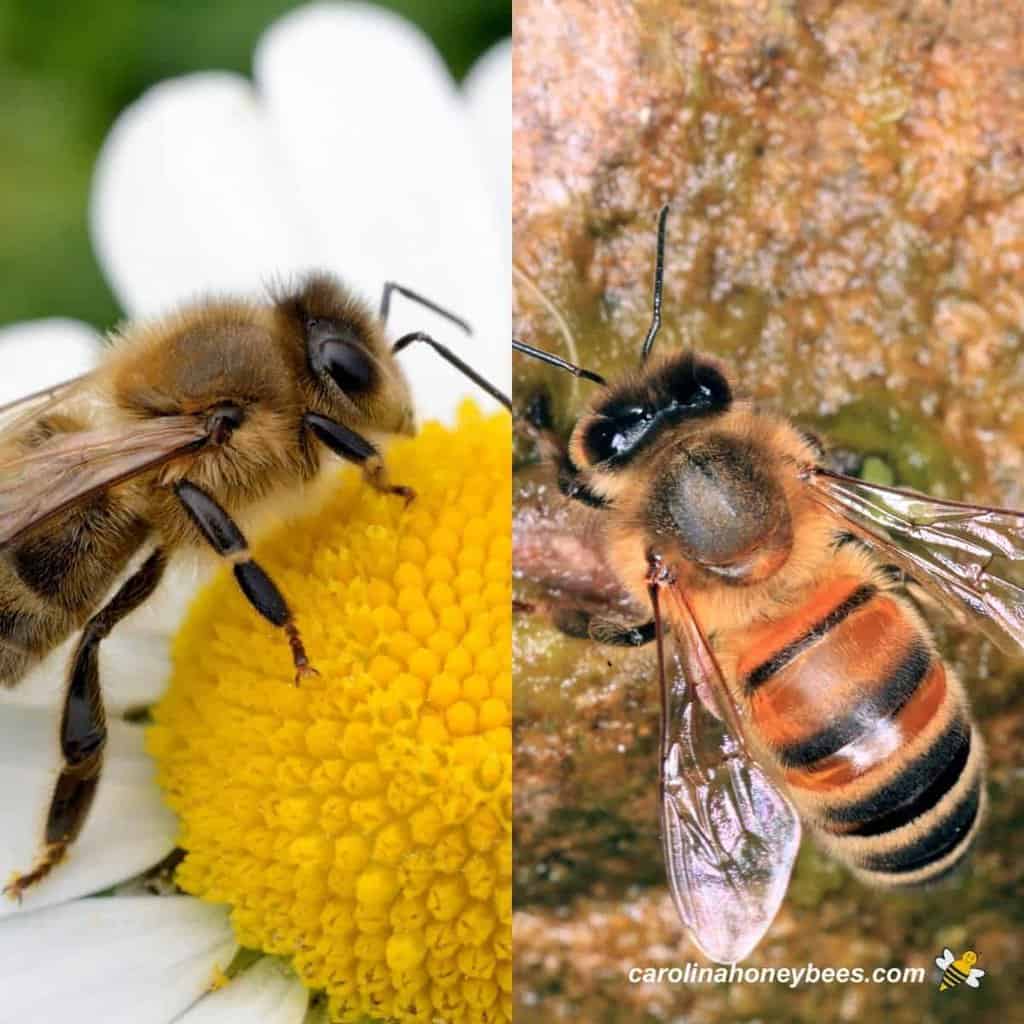
Climate and Temperature
When selecting a type of honey bee, it is important to consider the climate and temperature of your region. Some bee breeds are better suited to warmer climates while others are better suited to colder climates.
Disease Resistance
Another factor to consider is the bee breed’s resistance to disease. Some bee breeds have a higher resistance to common bee diseases than others. It is important to research different bee breeds to determine which ones will be best for your region.
Forage Availability
The forage availability in your region should also be taken into consideration when choosing a bee breed. Different bee breeds feed on different types of flowers and plants, so it is important to research which flowers and plants are available in your area.
Honey Production
Finally, it is important to consider the bee breed’s honey production. Some bee breeds are better at producing honey than others. It is important to research different bee breeds to determine which one will be the most productive in your region.
Pros and Cons of Different Honey Bee Breeds
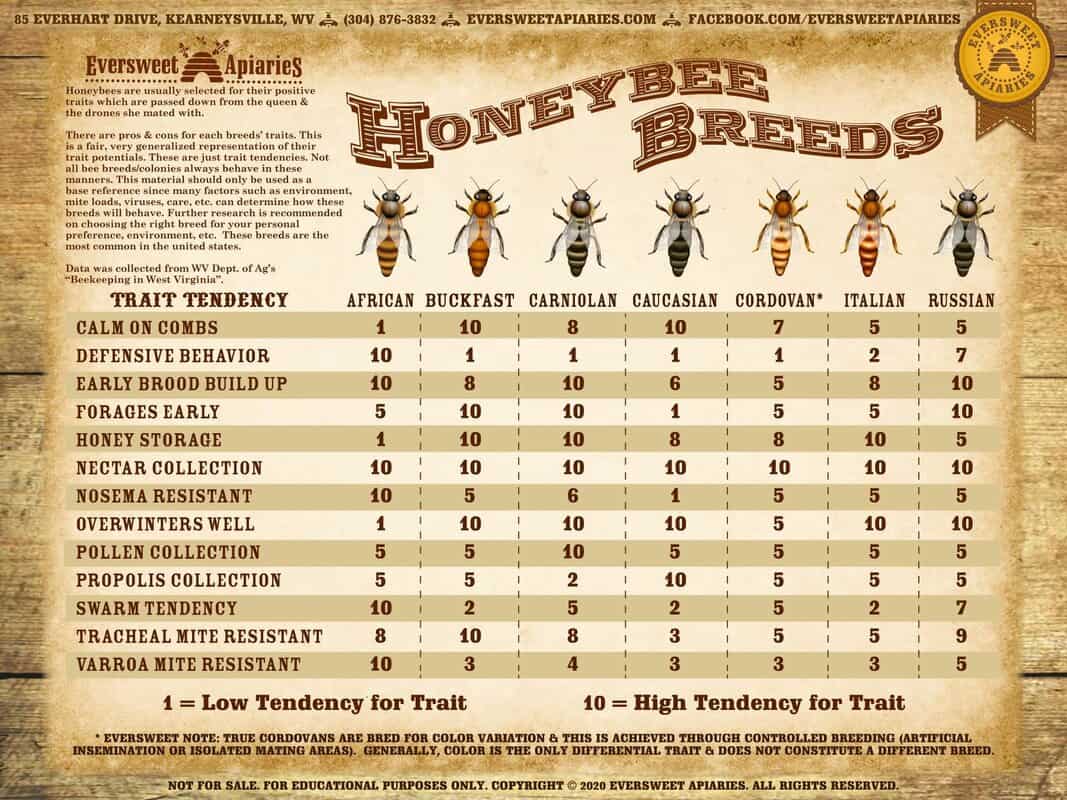
| Breed | Pros | Cons |
|---|---|---|
| Italian | Very gentle in temperament, easy to handle and resistant to diseases | Not as productive in honey production as other breeds |
| Carniolan | Very calm, gentle and easily managed, rapid build-up of population in the spring | Not good at storing honey, prone to swarming |
| Caucasian | Highly productive in honey production, gentle and rarely swarm | Difficult to manage and can become aggressive if disturbed |
| Buckfast | Highly productive in honey production, gentle and rarely swarm, able to overwinter in colder climates | Difficult to manage and can become aggressive if disturbed |
Honey bee breeds vary in their characteristics and it is important to understand the pros and cons of each breed before deciding which one to use. The most popular honey bee breeds include Italian, Carniolan, Caucasian and Buckfast. Italian honey bees are known for their gentleness and resistance to diseases, however, they are not as productive in honey production as other breeds. Carniolan honey bees are calm and gentle and are good for rapid build-up of population in the spring, but they are not good at storing honey and are prone to swarming. Caucasian honey bees are highly productive in honey production and rarely swarm, but they can become aggressive if disturbed. Buckfast honey bees are also highly productive in honey production and are able to overwinter in colder climates, but they can become aggressive when disturbed.
Honey Bee Breeding

Discover the Different Honey Bee Breeds:
- There are over 20,000 species of bees in the world, but the most common type of bee kept for honey production is the Western Honey Bee (Apis mellifera).
- Bee breeders selectively breed honey bee colonies to create new breeds with desirable traits, such as disease resistance, honey production, and gentleness.
- These honey bees have been bred to have specific characteristics, such as the Italian honey bee, which is known for its high honey production, and the Carniolan honey bee, which is known for its gentleness.
- Most honey bee colonies in the United States are a mix of different honey bee breeds, with the most common being the Italian, Carniolan, and Russian honey bee.
Bee breeding has been used for centuries to create different honey bee breeds with desirable characteristics. By selectively breeding honey bees, beekeepers can create colonies that are better suited for their needs. Beekeepers can also create new breeds with specific characteristics, such as disease resistance and honey production. Today, most honey bee colonies in the United States are a mix of different honey bee breeds, with the most common being the Italian, Carniolan, and Russian honey bee.
Care and Maintenance of Honey Bee Colonies
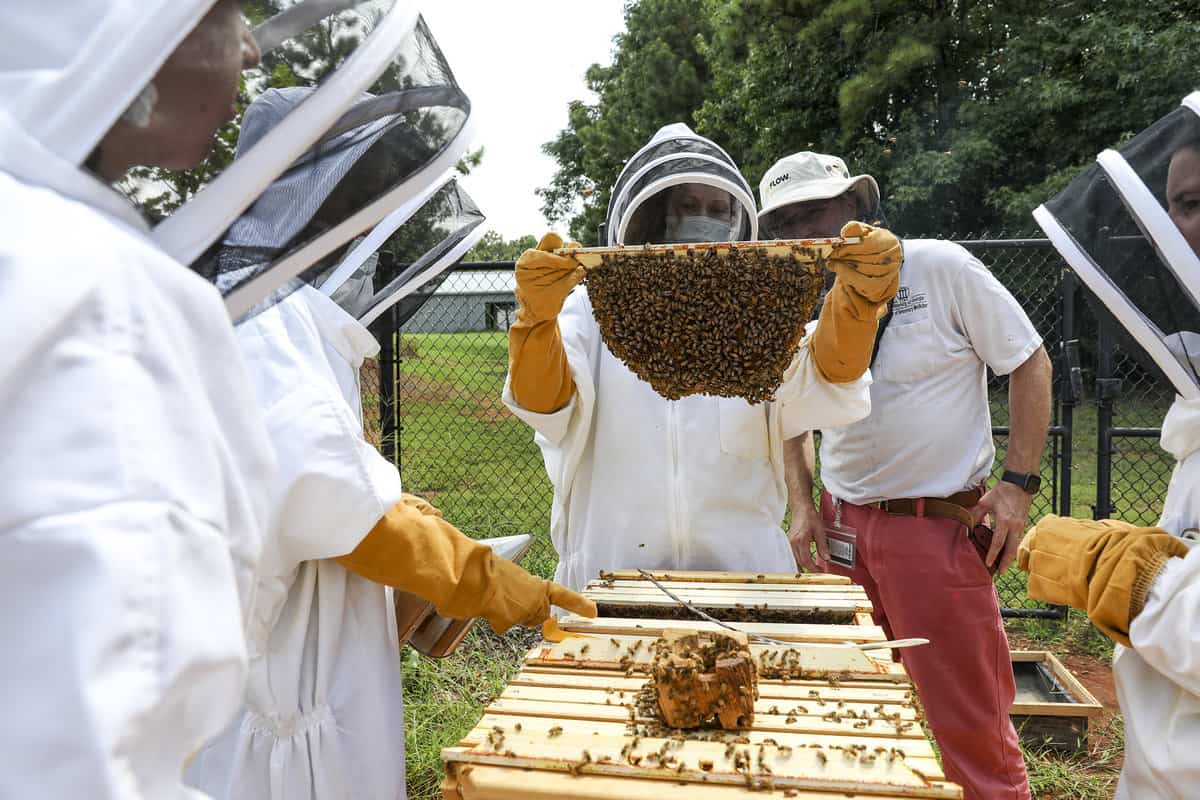
- Variety of Honey Bees: There are different kinds of honey bees, each with their own unique characteristics. From the common European honey bee, to the more exotic Africanized honey bee, each breed has its own unique traits, qualities and behaviors.
- Regularly Check the Hive: It is important to regularly check the hive and monitor the health of the honey bee colony. This can be done by inspecting the hive for signs of disease and pests, and by monitoring the temperature and humidity.
- Feed the Bees: In order to keep the honey bee colony healthy and productive, it is important to provide them with a regular supply of food. This can be done by providing a source of nectar and pollen, such as a bee-friendly flower garden.
- Provide Shelter: It is also important to provide the honey bee colony with a safe and secure place to live. This can be done by providing a wooden hive with an appropriate number of frames, and by maintaining the hive to ensure that it is well ventilated and free of pests.
- Protect the Hive: It is important to protect the hive from predators, such as bears and skunks, as well as from other environmental hazards. This can be done by using bee-proof fencing, and by making sure that the hive is in an area that is not prone to flooding or excessive heat.
- Harvest Honey: When the honey bee colony has produced enough honey to sustain itself, the beekeeper can harvest the honey for use. This can be done by using a bee smoker and a bee brush to safely remove the honeycomb from the hive.
Beekeeping Supplies and Equipment
Beekeeping is a hobby that requires special equipment and supplies in order to be successful. For starters, essential pieces of equipment include a beekeeper’s veil and suit, hive tools, smoker, and a honey extractor. A beekeeper’s veil and suit are necessary to protect the beekeeper from stings, while hive tools help in the manipulation of the hive. The smoker is equipped with fuel to create smoke that calms the bees, allowing the beekeeper to inspect the hive without causing a disturbance. Lastly, the honey extractor is used to remove honey from the comb.
Other beekeeping supplies may also be purchased, such as bee feeders and medications. Feeders are used to provide additional nutrition for the bees, while medications can prevent or treat diseases, mites, and other pests that may harm the hive.
Finally, the type of honey bees chosen for the hive is an important factor. Different honey bee breeds have different characteristics, so it is important to research the different types of honey bees in the US, as well as the different honey bee species, varieties of honey bees, and types of honey bee. This will allow the beekeeper to choose the best honey bee breeds for their hive. With the right different honey bees, kinds of honey bees, and types of honey bees, the beekeeper will be well on their way to a successful and productive hive.
Frequently Asked Questions
What type of equipment do I need to start beekeeping?
Beekeepers should have a bee suit, smoker, hive tool, bee brush, bee feeders, and a bee hive. A bee suit is a protective garment that helps ward off stings from the bees. A smoker is used to calm the bees and make it easier to work with them. A hive tool is used to open and scrape the hive. A bee brush is used to gently remove bees from the hive. Bee feeders are used to provide supplemental food for the bees. Finally, a bee hive is needed to house the bees.
How do I identify different honey bee breeds?
- Appearance: Honey bees come in a variety of shapes, sizes, and colors. Some of the most common bee breeds can be identified by their size, color, and the pattern of stripes on their body.
- Behavior: Different bee breeds have different behaviors, including the types of flowers they like to feed on, the time of day they are most active, how much honey they produce, and other behavioral traits.
- Location: The geographical location of the bee is an important factor for determining the breed. Different bee breeds are found in different climates and geographic locations, so understanding the region will help identify the bee breed.
- Testing: DNA testing is the most accurate way to identify a bee breed. It involves collecting a sample of the bee’s genetic material, which is then compared to a database of bee breeds to identify the exact breed.
How often do I need to check the hive?
New beekeepers should check their hives at least twice a month to monitor the health of the colony. More experienced beekeepers may need to check the hive more frequently, especially during the warmer months when the colony is growing rapidly.
Here are some tips on how often to inspect the hive:
- Check the hive once a week during spring and summer, when the colony is growing rapidly.
- Check the hive every 10-14 days in autumn, to ensure the hive has enough food reserves for winter.
- Check the hive every month in winter, to monitor for any signs of disease.
When inspecting the hive, look for signs of disease, pests, and the queen bee. If any issues are found, take the necessary steps to address them immediately.
What are the benefits of keeping bees?
- Pollination – Bees are important pollinators for many different crops, fruits and vegetables, and can help increase the yield of flowers and plants in your garden.
- Gardening – Having bees in your garden can help to increase the diversity of plants, as well as attract other beneficial insects such as butterflies.
- Honey Production – Keeping bees can provide you with a steady supply of honey. It can also be used for cooking, baking and making natural remedies.
- Wax Production – Bees produce wax, which can be used for a variety of purposes such as making candles, cosmetics and lotions.
- Education – Beekeeping is an educational activity that can teach children and adults alike about the importance of bees and pollination.
How can I protect my bees from predators?
- Install Physical Barriers: Physical barriers such as fencing and hardware cloth can be used to prevent predators from getting to the hive. This is particularly useful for ground predators such as skunks, raccoons, and bears.
- Secure the Hive: Make sure the hive is properly sealed. You can use propolis or wax to fill any gaps and add extra strength to the hive. This can help prevent predators from getting access to the hive.
- Keep the Hive Away from Predators: Place the hive in a location away from potential predators. This can also help reduce the risk of predators getting access to the hive.
- Use Traps: Traps can be used to capture and remove predators from the area. This can help reduce the risk of predators getting access to the hive.
- Provide Guard Bees: Guard bees can be used to help protect the hive from predators. They can act as a deterrent to predators and alert the other bees in the hive to any potential threats.
- Provide Shelter: Provide shelter for the bees so they can protect themselves from predators. This can be done by providing them with a safe place to hide or by providing them with a shelter that can keep predators away.
Conclusion
Beekeeping is a fascinating and rewarding hobby that can be enjoyed by anyone. By familiarizing yourself with the different honey bee breeds and their characteristics, you can create an ideal environment for their growth and success. With the right knowledge and supplies, you can unlock the secrets of beekeeping and be a successful beekeeper.
